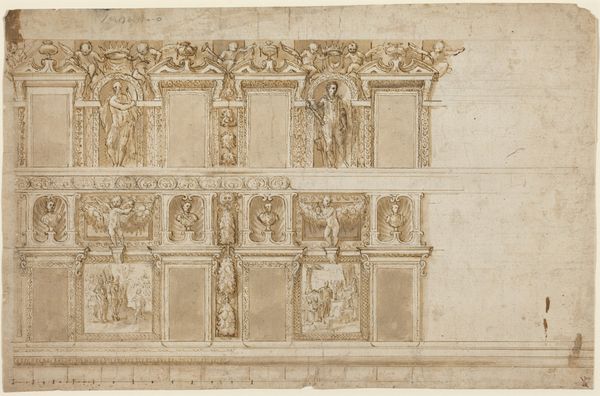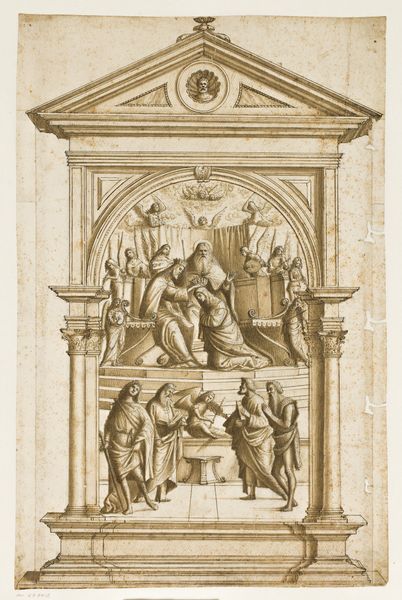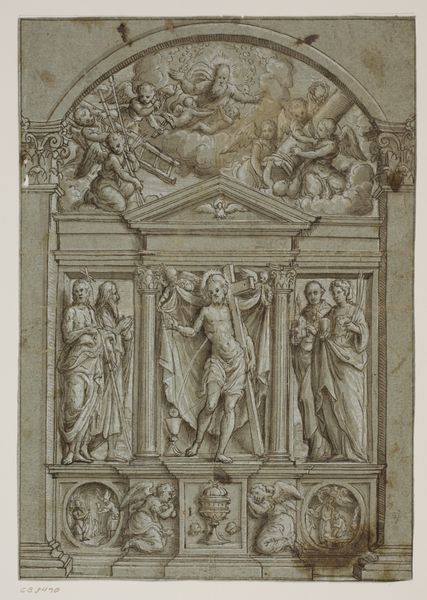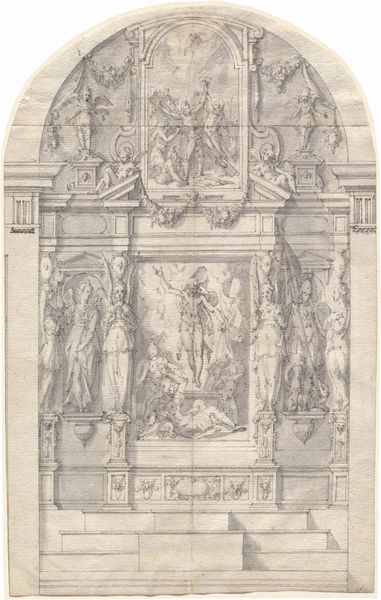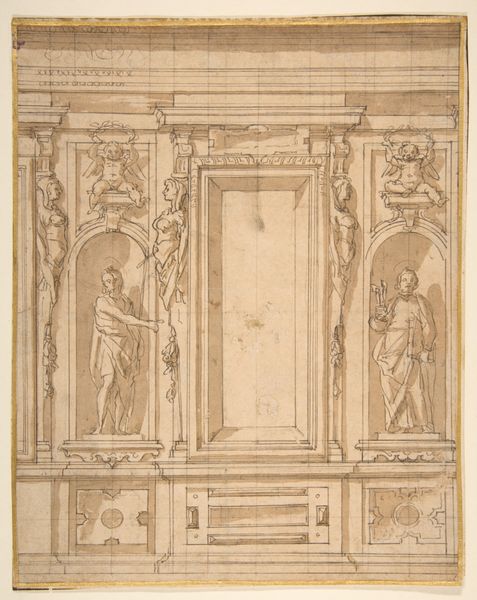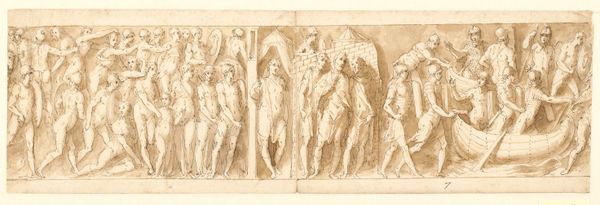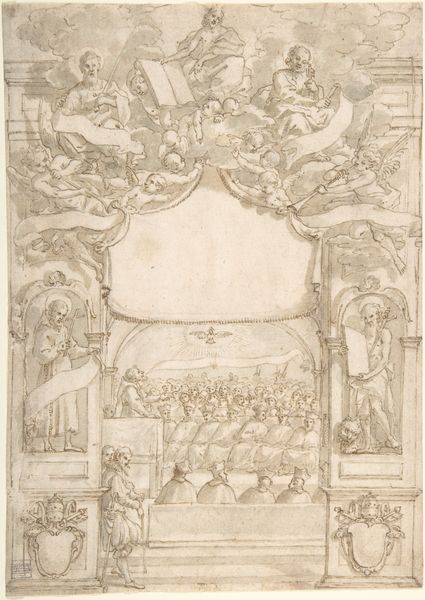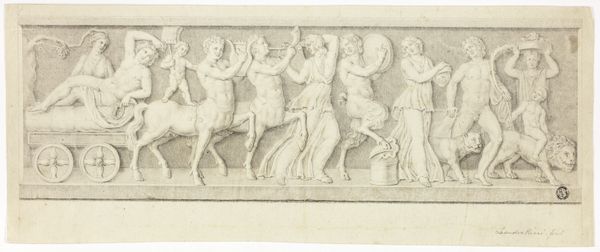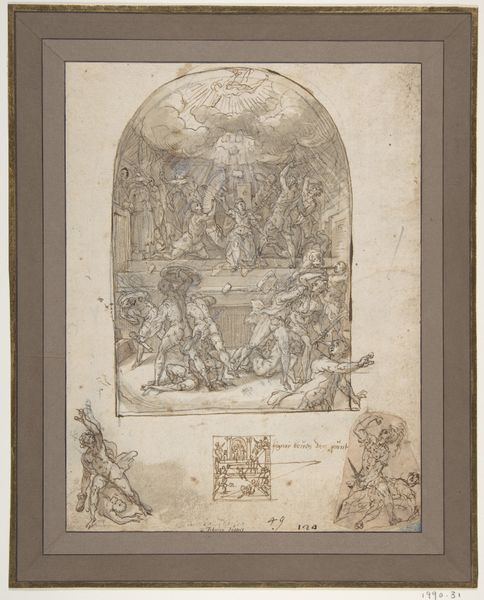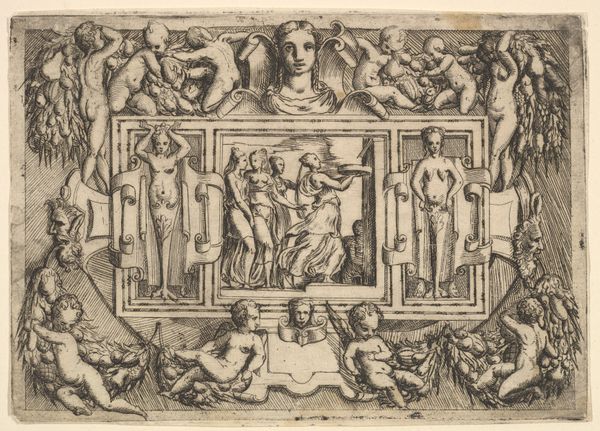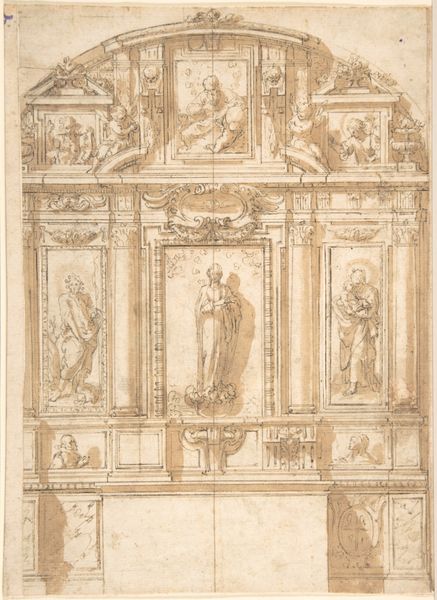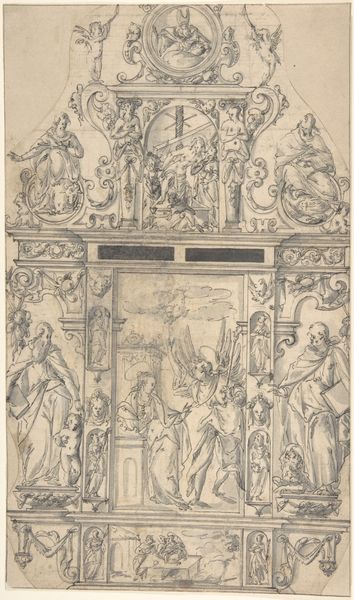
The Pedestal of the Obelisk of Tuthmosis III in Constantinople 1561
0:00
0:00
drawing, etching, architecture
#
portrait
#
architectural sketch
#
drawing
#
medieval
#
etching
#
etching
#
figuration
#
11_renaissance
#
line
#
history-painting
#
architecture
Dimensions: 436 mm (height) x 340 mm (width) (bladmaal)
Editor: This etching by Melchior Lorck, "The Pedestal of the Obelisk of Tuthmosis III in Constantinople," created in 1561, presents this architectural structure with a focus on detailed figuration. The precision of the line work is fascinating. How do you interpret this work, particularly its historical and cultural context? Curator: This etching offers a window into the Renaissance fascination with classical antiquity, particularly the appropriation and re-presentation of Egyptian monuments within the Ottoman Empire. Consider Constantinople, a city layered with histories – Roman, Byzantine, and now Ottoman. Lorck’s rendering isn't just a faithful depiction; it's an act of claiming and understanding the monument through a European lens. Editor: So, it’s less about the actual monument and more about how Europeans viewed it? Curator: Exactly! The etching allows a wide distribution through prints. In doing so, it participated in constructing a specific narrative about the East and its relationship to the West, or rather what was once the East as something assimilated within the West through empires. The question is how this visual representation reinforces certain power dynamics of the time. Editor: That’s a fascinating perspective. I hadn’t thought about the politics of image circulation in the 16th century in the same way I do today. Curator: Indeed, think about how images of power have functioned in varied times. Consider, too, who would have had access to this image, and what their motivations may have been to possess it. It becomes a historical document not only of an object, but a visual record of 16th century power and desire. Editor: It’s amazing to see how one image can unpack so much history and socio-political commentary. I'll definitely look at art from a new perspective now. Curator: I am glad. Remember that museums, through exhibiting the artworks, also engage in a political act.
Comments
No comments
Be the first to comment and join the conversation on the ultimate creative platform.
